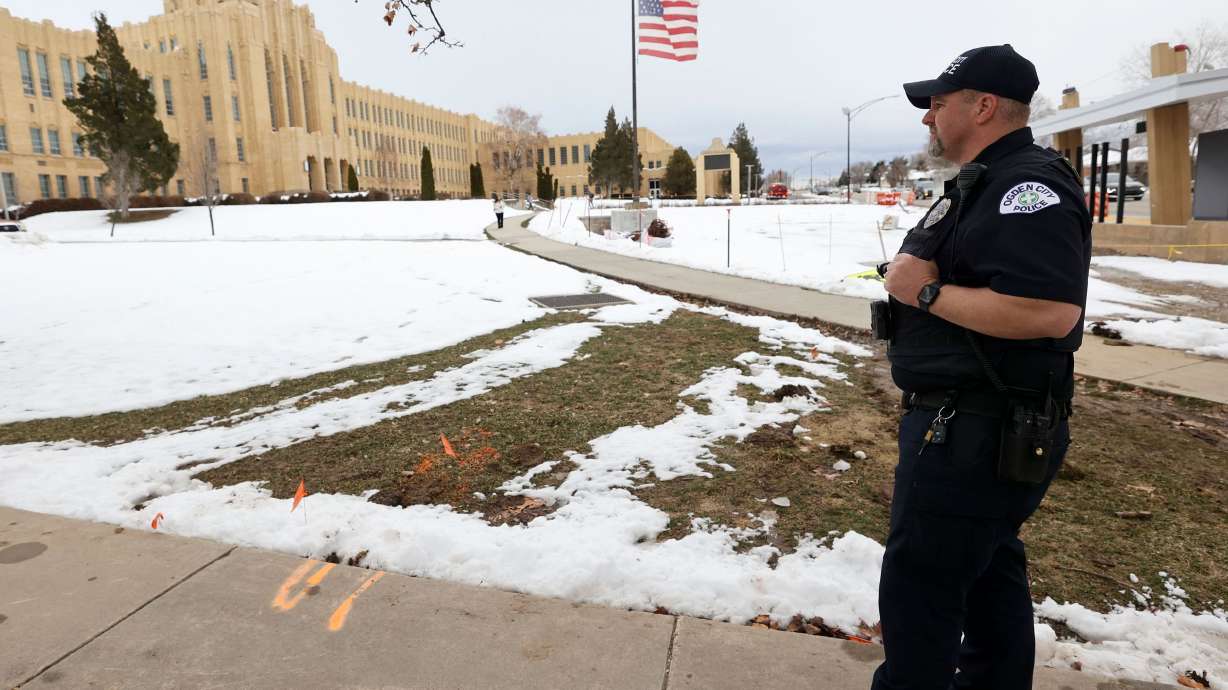Estimated read time: 4-5 minutes
This archived news story is available only for your personal, non-commercial use. Information in the story may be outdated or superseded by additional information. Reading or replaying the story in its archived form does not constitute a republication of the story.
SALT LAKE CITY — Starting at 9:17 a.m. on March 29, Cache County officials received the first of what would be multiple hoax calls across the state reporting an active shooter at a school.
The calls persisted for nearly an hour about threats to schools from Box Elder to Washington counties.
"And then there was an hour break where we believe they were targeting another state and then started back in Utah moving east," with purported threats to schools in Tooele, Sevier, Grand and Uintah counties, said Jake Broadhead of the Utah Department of Public Safety's Statewide Information and Analysis Center.
Broadhead, addressing the Utah Legislature's School Security Task Force's inaugural meeting on Tuesday, said the calls appeared to follow a script.
"The caller was an adult male with a thick accent claiming to be in a school bathroom who said the shooter was a student with a weapon. They used heavy breathing, pretended to be panting to try and make it sound like the incident was real and they were panicked. Whenever the dispatchers or whoever was on the other end of the call would try and elicit more information or ask harder questions the caller would disconnect," Broadhead said.
Affected districts scrambled to place schools on lockdown, but officers and school officials quickly determined the calls were hoaxes. One call threatened violence at Salt Lake's West High School, which was a red flag considering schools in the Salt Lake City School District were on spring break at the time.

At Ogden High School, a school resource officer was in the school when the threat was lodged, said Rep. Ryan Wilcox, R-Ogden, who is the task force chairman.
There "couldn't have been like a more perfect guy to be at that particular school," Wilcox said.
He had previously led the SWAT team and had commanded many of the officers who responded from other agencies, Wilcox said.
"So he immediately slipped into that. He was able to determine it was a hoax within minutes, if not seconds, because he knew those bathrooms that the caller was claiming the shooting was happening in," he said.
Wilcox said the response time was "less than three minutes with 12 cars there immediately clearing things."
There is video of an officer in Spanish Fork, who ran directly into a school building, which Wilcox described as "seriously heroic behaviors, sort of the opposite of what you've seen around the country."
When it was over, Wilcox said he had 12 pages of notes from the debrief of the incident in Ogden. Despite a swift, well-orchestrated response, responding agencies were "hypercritical" of their actions, he said.
"So even when they sort of rocked the moment, they were very honest with what they needed to do to improve," he said.
The day's events provided a lot of data and information that "we're going to be able to leverage to take care of our students and teachers, our communities," he said.
Deputy Superintendent of Student Achievement Patty Norman thanked Wilcox and other task force members for making school safety a priority. Task force members include law enforcement officials, educators, mental health providers and others.
"I think that the No. 1 thing on parents' minds right now when it comes to schools is not how well their students are doing academically, it's whether they're safe," Norman said.
Broadhead said hoax threats have numerous negative impacts such as mental health and trauma to students, community and responders.
Other negative effects are the financial and resource impacts to responding agencies such as law enforcement, fire, medical and health care providers.
"It can create crisis fatigue among responders and the public and creates that risk for complacency and a cry wolf mentality where your law enforcement or the public might notice a threat and they might not take it seriously," he said.
Broadhead said the speed, diversity and global access of communications technologies outpace the capability of law enforcement to enforce certain types of criminal activity.
But law enforcement officials have numerous strategies to determine if threats are real or hoaxes.
For instance, callers might mispronounce names of cities, streets or buildings. Their demeanor may be inconsistent with the alleged incident or there may be background noise that is inconsistent with the alleged incident such as typing or fake gunshots.
Another giveaway might be that the call was received on a nonemergency line or there is only one call, when real incidents typically result in multiple calls, he said. Another red flag is that the story changes when the caller is confronted or asked follow-up questions.
"Then there's also the use of 'Call of Duty' speak, which is the use of exotic or specific names of firearms, different types of weapons that might be found in a video game," Broadhead said.
The majority of the hoax threats known to law enforcement officials that occurred in Utah are related to social media trends, he said.
"The March 29 incident was an anomaly within Utah, but it was not an anomaly nationally, according to FBI estimates, which they themselves recognize are probably underreported. They estimate about 5,000 hoax calls come into the U.S. a year and that's not specific to schools or hospitals," Broadhead said.









